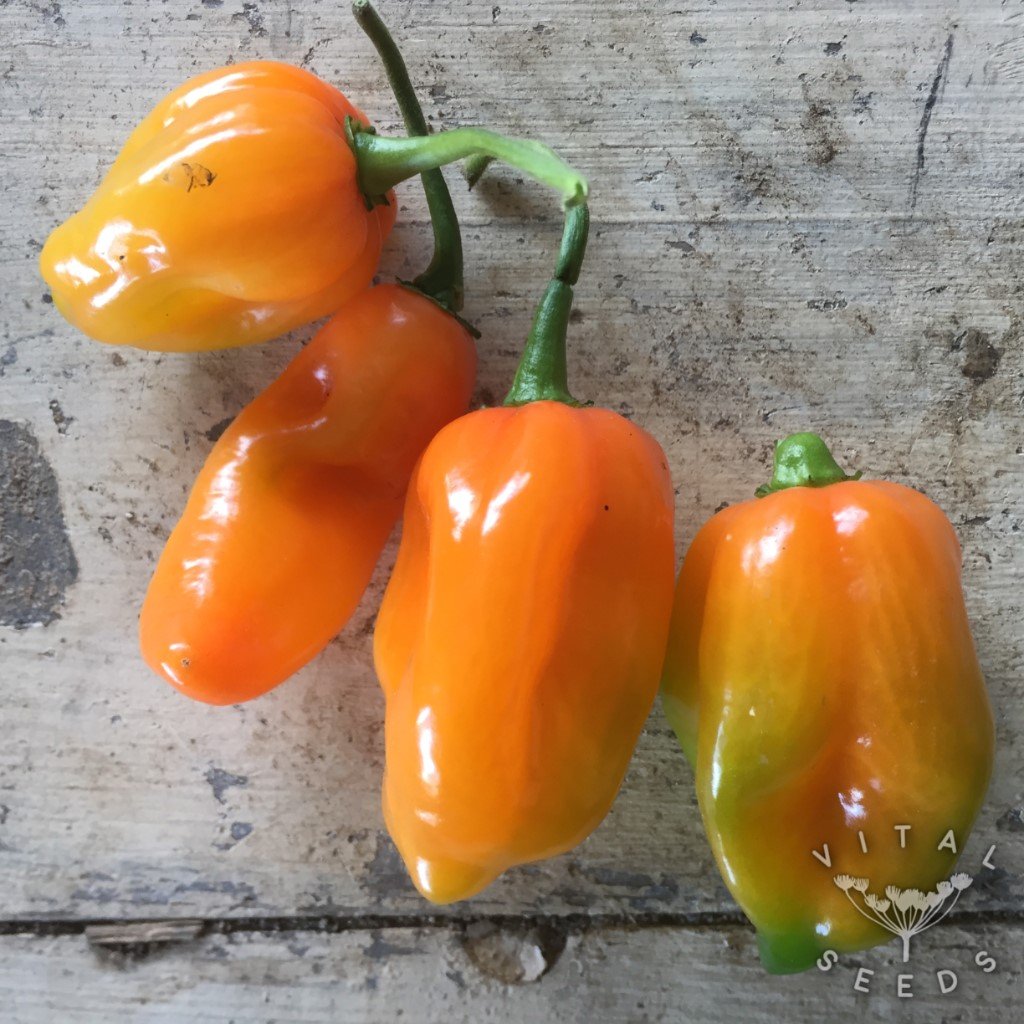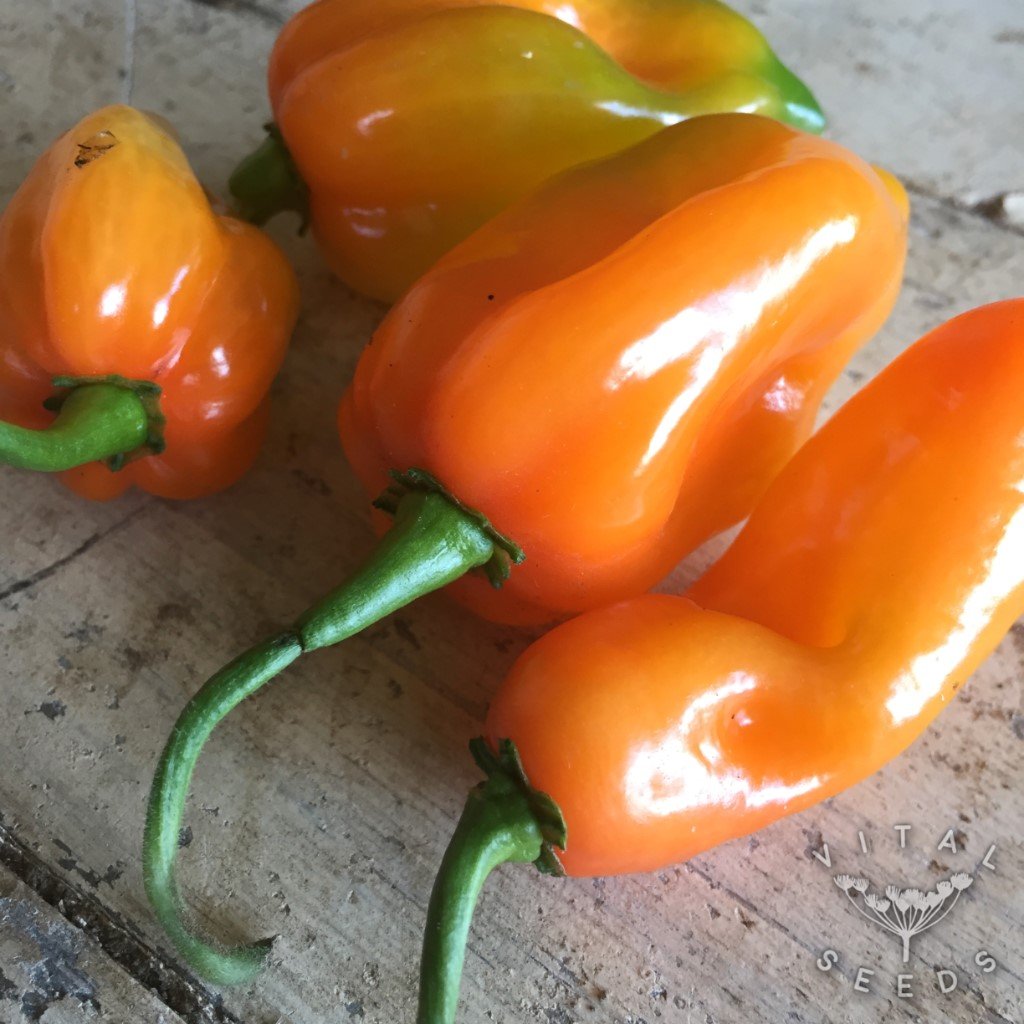Chilli – Habanero Magnum (Organic)
£1.95
Bright orange, very hot and fruity, a variety that is productive and does better in cooler climates than most other chillies. Habanero Magnum rates between 200,000 and 325,000 SHU on the Scoville scale and is therefore on the hotter end of the spectrum. A fruity almost floral flavour can be tasted when the initial spice has faded. It is a great ingredient for hot sauces or when powdered. A way of controlling the heat when cooking with it is to make a couple of holes in the chilli and then add it to the sauce (or whatever it is your cooking) as a whole and remove after a certain amount of time determining the degree of fieriness.
(Approximate seed count – 20)

Coming / back soon!
| Month | J | F | M | A | M | J | J | A | S | O | N | D | ||||||||||||
|---|---|---|---|---|---|---|---|---|---|---|---|---|---|---|---|---|---|---|---|---|---|---|---|---|
| Sow | ||||||||||||||||||||||||
| Plant | ||||||||||||||||||||||||
| Harvest | ||||||||||||||||||||||||
Seed Sowing
Chillies and sweet peppers benefit from heat to germinate, ideally around 20 degrees Celsius. A heated propagator is the ideal place to start your seeds but if you don’t have one a warm airing cupboard or radiator shelf will do, anywhere that is between 20-30 degrees for at least a few hours a day.
Sow seeds from February onwards either in modules or in a seed tray, with seedlings being pricked out once germinated and potted on into 10cm pots once they have two sets of true leaves. Ideally finish all your sowing by mid-March to ensure you can harvest a decent crop.
Transplanting
Transplant your seedlings into their final growing position in May, when risk of frost has passed. They will benefit from being grown undercover in a polytunnel or greenhouse, but can be grown outdoors in a well sheltered, south facing spot.
Plant out into final growing position at 45x45cm spacing. Cover plants with fleece outside while night temperatures are still cool in June.
Chillies and sweet peppers prefer well-draining, fertile and moisture retentive soil, so be sure to amend your soil with good quality compost or well-rotten manure before planting.
Plant Care
Plants will benefit from being staked, either with bamboo canes or for sweet peppers, with horizontal netting to keep the plants standing upright as fruits begin to swell and get heavy.
Chillies and sweet peppers don’t like the soil around their roots to be too damp, so make sure to water evenly and regularly.
To encourage plants to side shoot you can also pinch out the main shoot once plants reach 30cm tall. For a bumper crop, make your own batch of comfrey tea to feed to your plants weekly.
Challenges
Spider mite thrives in hot, dry conditions. To deter them in hot weather, mist chillies and sweet peppers regularly to increase the humidity around the plants.
Blossom end rot can be caused by erratic watering and botrytis can be a problem in areas with poor ventilation.
Harvest
Chillies and sweet peppers will begin to be ready to harvest from late summer onwards. For the mildest flavour, pick chillies while they’re still green. This will also encourage the plant to produce more fruits. Otherwise leave them to mature and ripen in colour on the plant for a hotter experience! Sweet peppers can also be harvested green, although will be much sweeter if left to ripen to their mature colour on the plant. Some varieties of chilli are suited to being dried and are great turned into chilli flakes for warmth into the winter.
Seed Saving
Sweet peppers will happily cross with chillies, so you need to make sure any plants that you are growing for seed are isolated by about 50m from any other plants growing nearby. You can also achieve this effect by making an isolation cage around 3 or 4 plants.
Allow fruits to ripen fully to their mature colour. Cut them open gently and rub the seeds onto a plate to separate them from the flesh. Protect your hands with gloves when processing chillies. Dry the seeds on a flat plate somewhere dry and warm until seeds snap when bent.

